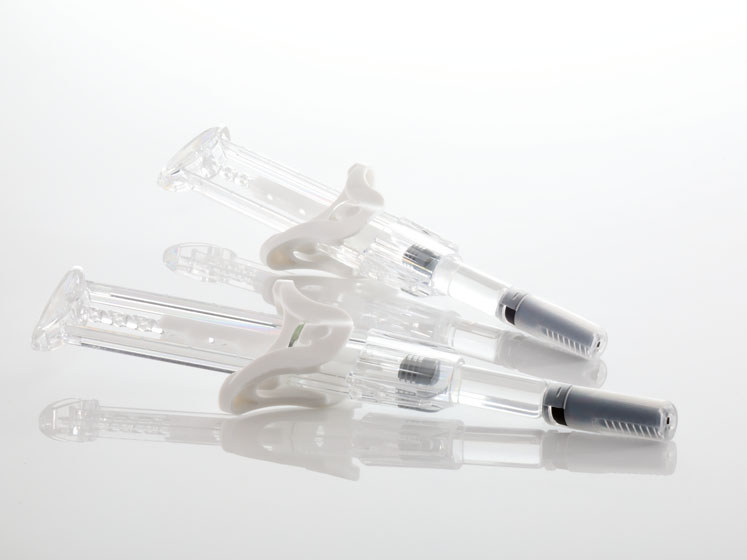Almost two decades after the implementation of the Needlestick Safety and Prevention Act in the US, and more than six years since the equivalent implementation in the EU, adoption rates of safety devices still have some way to go to meet optimal regulatory compliance penetration levels, particularly in non-hospital settings.
Every year, healthcare workers in the US still sustain 320,000 needlestick incidents in hospital and non-hospital settings.1 Improving compliance in non-hospital settings is particularly critical as self-administration in non-hospital settings continues to soar across Europe and the US.
Today, more than two-fifths of registered nurses are now employed in non-hospital settings in the US, and an estimated 7.5 billion syringes are used in the homecare environment every year.2,3 With the administration of medication by injection migrating towards the home environment, the importance of needlestick safety has accordingly extended beyond the formal healthcare setting.
Since the passage of the US needlestick legislation, which became effective in 2001, needlestick injuries have fallen by approximately 30%.4 Nevertheless, the Occupational Safety and Health Administration (OSHA) estimates that 5.6 million workers in the healthcare industry and related occupations are still at risk of exposure to bloodborne pathogens.5
Non-hospital healthcare settings are particularly vulnerable, as it is estimated that more than half of non-hospital healthcare settings are in violation of the OSHA law.6 Similarly, in the EU, compliance levels for safety engineered injection devices is at 70% across EU economies, a number that falls to 60% in the homecare environment.7
Directly correlated to this evolving drive towards homecare is the growth of the safety syringe market. As home self-injection increases, so does the importance of managing sharps safety outside of the hospital or the doctor’s surgery. Reports highlight that sharps injuries to homecare aides in a homecare setting are often caused by the incorrect disposal of sharps — a staggering 15% of exposures.8 This also applies to staff working outside a clinical environment and visiting an outpatient in their home.
A growing market
In this context, disposable delivery devices such as prefilled safety syringes for subcutaneous delivery are becoming a key tool in modern healthcare. Research reveals that the global prefilled syringes market was estimated to be worth more than US$772 million in 2018, rising to some $1.137 billion in 2023.
This represents a growth rate of 8.1%, whereas — more specifically — the safety engineered prefilled syringe market is expected to grow at a compound annual growth rate (CAGR) of 9.6%.
A number of factors are accountable for this growth; among these is the new wave of biological drug therapies entering the market. These therapies often are the only ones to provide best outcomes for patients suffering from chronic conditions such as neurological, cardiovascular and autoimmune diseases, and are typically administered via subcutaneous injection owing to the larger molecular size of the drugs.

Given that biologicals tend to require regular and highly accurate administration, it is impractical to continue visiting a clinic or to call out a nurse for each injection, making self-administration through safety syringes the most practical and economic solution. Self-administration not only empowers the patient and encourages them to be more compliant with their medication regime, it significantly reduces the burden on the healthcare system.
Similarly, as a number of original biologics come out of patent protection, a host of new drugs are entering a newly competitive market, reducing cost to patients and encouraging self-administration. Specifically, between 2018 and 2020, a significant number of original biologics are coming off patent, opening the market to biosimilar competitors.
Biological drugs have very specific requirements regarding accuracy of dosage, which explains the preference for prefilled syringes as delivery devices for these types of drugs — especially in a homecare or self-administration setting where there is no professional presiding.
Patient centricity
In the context of mounting self-care, one of the main driving forces behind the growth of prefilled safety syringes is the combination of convenience and safety for the patient and their carer. Older patients are often less dextrous than their younger counterparts and could struggle with accurate dosage.
It is, therefore, crucial that self-administration devices should be as simple as possible to use, should require a minimal amount of force to activate and should include passive safety mechanisms to reduce additional activation steps.
Many of the new biological drugs are making it possible to treat inflammatory conditions such as rheumatoid arthritis — meaning that debilitated patients will need to be able to securely hold and operate the delivery device. With automatically retracting needle mechanisms, prefilled safety syringes, as well as autoinjector devices, fulfil both ease-of-use and safety device requirements at the same time.
With the shift towards home and self-care unlikely to slow down, adequate measures and devices are indispensable to support the safety of home drug delivery.

Finally, the increase in scrutiny on medical administration from health authorities further to medication error scandals in the US and Europe is another driver for growth of the prefilled device market. Prefilled syringes could help to ensure that the correct drug is delivered, accurately and in the appropriate dose, significantly reducing the risk of medical errors.
Similarly, safety syringes help to protect hospital and non-hospital healthcare workers against infection through sharps.
Unsafe injections as a result of contamination with bloodborne viruses raise serious concerns about the spread of HIV, hepatitis B and hepatitis C among healthcare workers and the general population. For many of these diseases, there is no vaccine.
Although modern treatments that eliminate the hepatitis C virus, for instance, mean that infection through sharps no longer ruins healthcare workers’ careers, expensive and disruptive treatment periods are still required. With healthcare staff shortages being rife around the world, it is fundamental to secure their work environment and protect staff against the risk of needlestick injury at work.
Introducing safety devices is a proven strategy to remove unnecessary risk from the healthcare professional’s working environment, including home visits. Prefilled devices and syringes also have time-saving potential, helping overburdened healthcare staff to accurately deliver medication more rapidly and speed up clinical pathways and procedures.
In parallel with the rise of self-administration, the demand for safety engineered devices and prefilled syringes is growing around the world. Within the context of increasing scrutiny from health authorities, prefilled safety engineered devices are responding to the various needs of users requiring safety mechanisms, sharps protection, accurate dosage and high usability for infirm patients.
References
- www.reliasmedia.com/articles/31090-health-care-workers-still-suffer-320-000-needlesticks-a-year.
- http://healthworkforcestudies.com/news/proportion-of-registered-nurses-employed-in-hospitals-falls-below-60-in-2013.html.
- K. Gold, “Analysis: The Impact of Needle, Syringe and Lancet Disposal in the Community,” Journal of Diabetes Science and Technology 5(4), 848–850 (2011).
- www.osha.gov/shpguidelines/docs/Leading_a_Culture_of_Safety-A_Blueprint_for_Success.pdf.
- www.osha.gov/SLTC/etools/hospital/hazards/sharps/sharps.html.
- C.E. Cooke and J.M. Stephens, “Clinical, Economic and Humanistic Burden of Needlestick Injuries in Healthcare Workers,” Med. Devices (Auckl.) 10, 225–235 (2017).
- www.europeanbiosafetynetwork.eu/ebn-sharps-survey-2016-results.
- D. Haiduven and S. Ferrol, “Sharps Injuries in the Home Health Care Setting: Risks for Home Health Care Workers,” AAOHN J. 52(3), 102–108 (2004).
